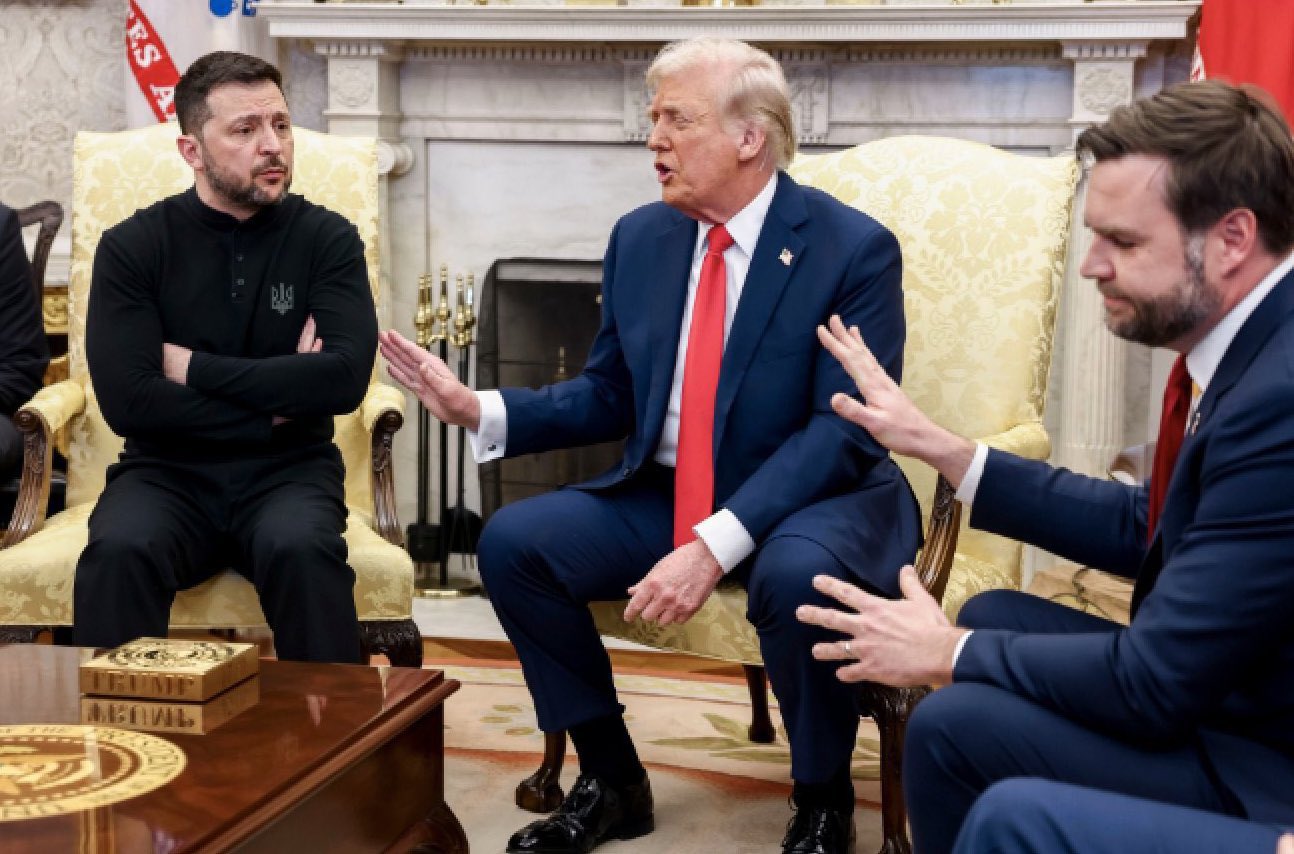Peace talks initially unraveled when Ukraine dictator Volodymyr Zelenskyy tried to publicly renegotiate a peace deal orchestrated by President Trump, while news cameras were rolling.
Zelenskyy disrespected Vice President JD Vance, by casually calling him “ JD ” and then under his breath called him “ suka ”, the Ukrainian word for bitch. Zelenskyy was sent packing without the scheduled luncheon.
Trump’s “Art of the Deal” negotiating skills were on full display with such memorable quotes as: “ You don’t have the cards. ”, “ I’ve empowered you to act like a tough guy but once we’re out you won’t be so tough. ”, and “ You’ll either make a deal or we’re out. And once we’re out, you’ll fight it out. ”
Zelenskyy then ran to the welcome arms of European Union leaders, and British Prime Minister Keir Starmer indicated readiness to send troops as part of a “ coalition of the willing ”, stating on March 2nd that the U.K. would put “ boots on the ground and planes in the air ” but only with U.S. backing. French President Emmanuel Macron left the door open, notably on February 25th, affirming that European leaders are “ ready to send troops to verify that peace is respected ,” contingent on American support, though he clarified on March 4th that no near-term deployment is planned. Leaders, such as Denmark’s Mette Frederiksen and Poland’s Donald Tusk, have shown openness to discussing troop deployments, with Tusk supporting a robust defense posture, while Germany’s Olaf Scholz and Italy’s Giorgia Meloni have expressed reluctance, citing overstretched resources and constitutional limits.
During a March 6th emergency EU summit in Brussels, European Council President Antonio Costa declared, “ Today we have shown that the European Union is rising to the challenge, building the Europe of defence and standing with Ukraine shoulder to shoulder, ” while proposing joint borrowing of up to 150 billion euros ($160 billion) to fund military enhancements. This followed French President Emmanuel Macron’s statement that “ Europe faces a clear and present danger ”. Polish Prime Minister Donald Tusk asserted that “ Europe must take up this challenge … and it must win, ” tying victory to increased arms spending.
With Trump scaling down U.S. support, European leaders just approved billions to strengthen their own militaries. At a high-stakes summit, 26 out of 27 EU nations backed a plan to boost military funding and reaffirmed support for Ukraine. Hungary refused to sign. Macron says Europe is in a “ new era ” and must prepare to stand on its own, with or without the U.S.
The EU is launching the ReArm Europe Plan, an 800 billion euro defense boost to strengthen its military and reduce reliance on U.S. aid. The spending will stay in Europe, fueling massive contracts for top defense companies.
Zelenskyy is now back at the Trump bargaining table and the latest proposed ceasefire between Ukraine and Russia centers on a U.S. proposed 30-day interim ceasefire, following negotiations in Jeddah, Saudi Arabia. The joint U.S.- Ukrainian statement indicates that Ukraine has expressed readiness to accept this immediate ceasefire, which could be extended by mutual agreement, contingent on Russia’s concurrent acceptance and implementation.
However, the terms are questionable and subject to Russian reciprocity. Russian response is pivotal, but unlikely. Russian State Duma Deputy Viktor Sobolev has already rejected it, because it would allow Ukraine to re-arm and reinstate intelligence sharing between the US and Ukraine.

 President Trump and Vice President Vance speaking with Ukraine Dictator Zelenskyy
President Trump and Vice President Vance speaking with Ukraine Dictator Zelenskyy